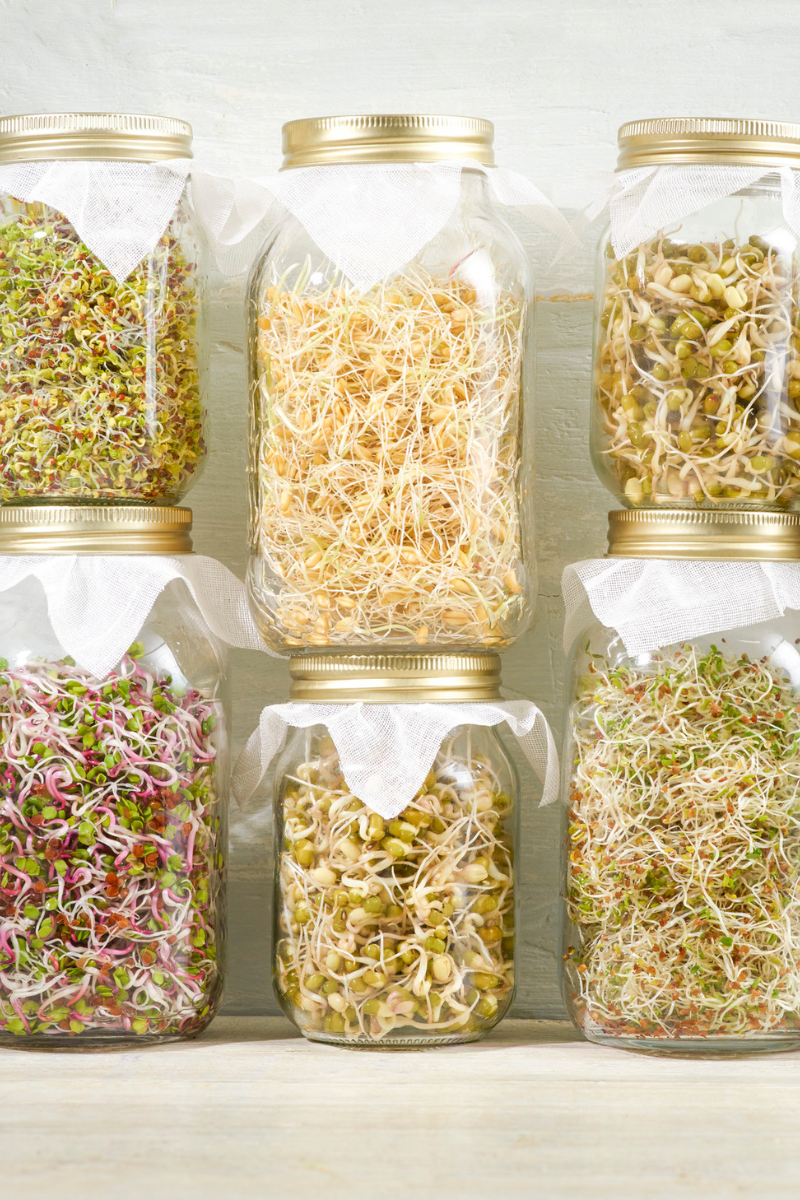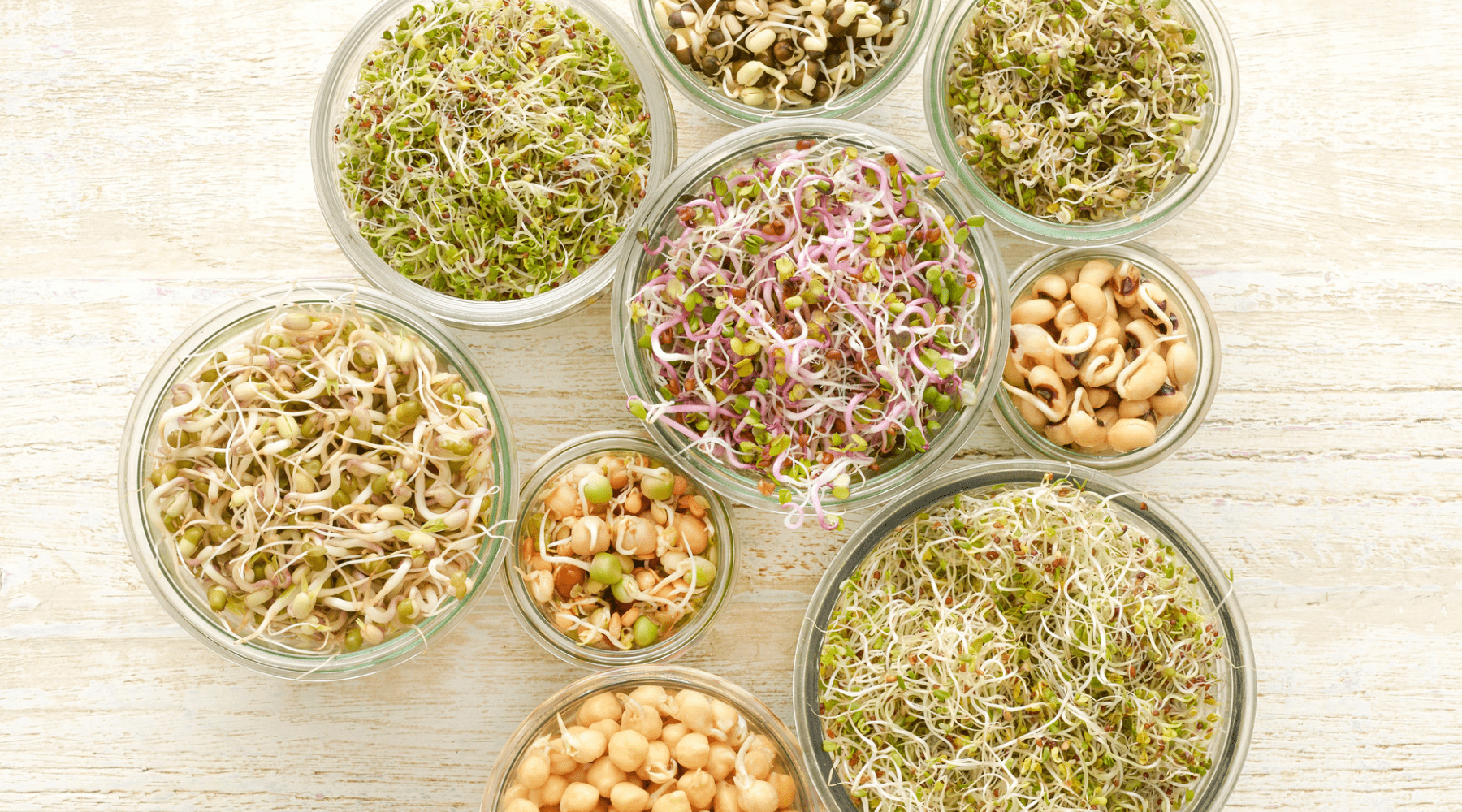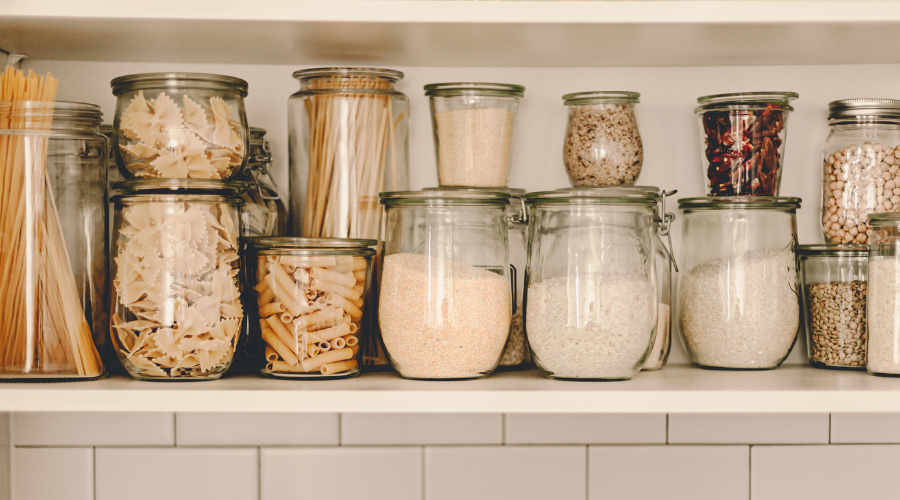SPROUTING SEEDS HAVE NEVER BEEN EASIER!
If you are looking for an easy and affordable way to improve the nutritional value of your diet, sprouting seeds are the answer. Moreover, they're incredibly versatile, can be eaten raw or cooked, and can be grown all year round.
WHAT ARE SEED SPROUTS EXACTLY?
They are essentially mini superplants!
Seed sprouts are very young plants that germinate from the seeds of various plants and are packed with protein, fiber, vitamins, minerals, amino acids, and plant enzymes.
These living seeds release a burst of essential nutrients upon sprouting to help the plant develop into a healthy plant. As a result of this initial nutritional boost, seed sprouts are highly nutritious and beneficial for your health.
Sprouts can grow indoors almost all year long, making it a fantastic option for those who love gardening but don't have the space or ideal climate.
You only need a small number of seeds to grow fresh produce for use daily in your cooking and dishes.
So what are the best seeds for sprouting, and how do you grow sprouts at home? Let's dive in!
HOW TO GROW SPROUTS
Growing sprouts is easy when you follow the instructions, and once you've done it a few times, you will become an expert!
Sprouting requires minimum tools and supplies, with jar sprouting being the easiest method for beginners, where you only need glass jars with mesh lids and the seeds. You can start with one type of seed or blend different types of sprout seeds for flavorful combinations.
Unsprouted seeds have a long shelf life and are very cost-effective.
Check out the video below for a demonstration on how to grow sprouts!
THE EXACT STEPS FOR GROWING SPROUTS

YOU'LL NEED
- 1-2 Tablespoons of your chosen sprouting seeds
- 1 Quart wide-mouth size mason jar or a special sprouting jar like this one
- 1 Sprouting Lid fitted for wide-mouth jars or sprouting jar lid. Or just a plain cheesecloth.
INSTRUCTIONS:
- Cover the sprouting seeds with water (preferably filtered) in the mason jar and let soak for at least 8 hours or overnight.
- Drain and rinse the sprouts with new water through the sprouting lid. Drain again until most of the water is drained.
- Repeat the rinsing and draining process at least two to three times per day, continuing for 3-5 days until the sprouts are edible and grown to your liking.
- Remove the sprouts from the jar and rinse them in a water-filled bowl to let the seed hulls come off and rise to the top.
- Remove the hulls and rinse again if necessary.
- Drain the sprouts thoroughly, and let them air dry on a dishcloth or paper towel. Proper drying will stop their growth and slow down spoilage.
- Store them in the fridge in a container lined with a paper towel. The sprouts will keep fresh for at least a week.
-v1661262262019.png?800x1200)
CAUTION:
Sprouts are highly perishable and have a high risk of bacterial infection due to the humid growing environment.
Follow these guidelines to avoid getting sick:
- Choose sprouting-specific seeds, as these are tested and free of e. coli, salmonella, and other harmful bacteria. Standard store-bought lentils and others are not necessarily safe to eat, as manufacturers assume you will boil or cook them.
- Use cooled-down boiled or filtered water to soak the seeds and rinse the sprouts.
- Drain the water very well after soaking and rinsing.
- Make sure the lids have enough holes for ventilation.
- Use clean jars, lids, spoons, and napkins/cloths.
- Use seeds within their shelf life.
- If beans and seeds have a funny smell or look slimy, throw them out.
- Use within 1 week.
12 OF THE BEST SPROUTS TO EAT
1. ALFALFA SPROUTS
Alfalfa sprouts are a very common and popular sprouting variety as they have a mild taste making them great to add to any dish for extra crunch and nutrients.
They are an excellent source of minerals, calcium, magnesium, and potassium -all crucial for muscle and bone health.
Alfalfa seeds will take three to seven days to sprout and should preferably be eaten raw as the nutrients in the sprouts are unstable and will go lost when cooked.
2. BROCCOLI SPROUTS
Broccoli sprouts don't taste like broccoli but add a mildly spicy, nutty flavor to any dish that needs a spicy flavor boost. They also add a beautiful pop of striking green color to your dishes.
Broccoli sprouts are sure to increase the nutritional intake of any dish and boost your overall health. They are high in antioxidants and a good source of fiber, folic acid, and vitamins A, C, and K.
You can expect edible-sized sprouts from seed after five days. Like alfalfa and other thin sprouts, you should eat them raw to maintain their nutritional structure and value.
"The nutrition and flavor of fresh broccoli sprouts are definitely a 5 star. Economical salad!" - Joann R.
3. BEET SPROUTS
Beet sprouts are more challenging to grow and take longer to sprout to edible form, between eleven to twenty-one days from seeds. But they are worth the wait!
They taste slightly earthy and sweet, very much like full-sized beets. Their striking hot pink stems and bright green leaves make any dish eye-catching.
Not only do they look gorgeous, but like all sprouts, they add nutrients such as Vit A, B, C, E, and K, and also iron, calcium, and protein.
4. CHICKPEA SPROUTS
Beans such as chickpeas are sometimes difficult to digest, and sprouting helps to improve digestion.
They are also more protein-rich than other sprouts and are packed with many nutrients such as Vitamin C and iron.
Since chickpeas are larger, they need to be soaked for longer and require more frequent rinsing and draining.
Chickpeas are one of the quickest beans to sprout; they will sprout in two days. Enjoy them raw in salads or cooked in soups and veggie burgers, or make delicious raw hummus.

5. MUSTARD SPROUTS
Mustard sprouts look very similar to alfalfa sprouts and have a spicy, earthy flavor. Some compare them to the taste of horseradish. They work great to add a bit of spiciness to sprout blends or eat on their own if you choose.
Expect a nutritional boost of vitamins and minerals, including calcium, iron, zinc, magnesium, and selenium, when you add them to salads and sandwiches.
Mustard sprouts are ready to harvest in three to six days, and the longer the sprouts mature, the more intense the flavor will become.
6. GREEN PEA SPROUTS
Green peas grow tasty, refreshing sprouts and have a sweet, mild flavor that adds crunch to salads or sandwiches.
They are packed with Vitamin A, B, and C and minerals such as calcium, iron, and phosphorous.
Green pea sprouts are larger than broccoli and alfalfa sprouts and take about the same time as mung bean sprouts to grow. You can harvest sprouted green peas within two to three days.
Due to their size, green peas need to soak longer and require more frequent rinsing and draining.
"These cook up delicious and tender, and they can be sprouted too! Did a test batch - germination was fast and very high & the sprouts tasted great. Quite pleased I bought these peas!" -Heidi W.
7. KALE SPROUTS
Kale sprouts have a unique shape with grey-green and violet purple-toned veins. They provide a crisp texture with a sweet flavor and undertones of nuts, pepper, and classic brassica bite.
Kale sprouts are a good source of vitamin C, folic acid, calcium, and potassium and can be enjoyed both raw or cooked by lightly sauteeing them.
You can harvest kale sprouts from day three to six, depending on how long you want them to grow.
SHOP KALE SPROUTING SEEDS HERE
8. LENTIL SPROUTS
Of all the sprouts, lentils contain the most protein, and they are very low in calories, making them fantastic for any diet or weight loss program.
Lentils will add great crunch and a rich, nutty flavor to any dish. Remember that split lentils won't sprout; you must purchase whole lentils.
Not only are they rich in nutrients such as thiamine, copper, manganese, iron, and vitamin C, but they also look pretty with their various colors.
Lentil sprouts can be enjoyed two to four days after sprouting, depending on how you like them. They can be eaten raw or lightly cooked to soften them a bit.
-v1728303287239.png?680x2079)
9. MUNG BEAN SPROUTS
Another popular sprout is Mung bean sprouts. They originated in Asia and have become widely used in Asian and Western diets.
Mung beans are high in protein and fiber, low in calories, and rich in vitamin C, calcium, and iron. With their mildly nutty flavor and bigger size, they go well in cooked dishes such as stir-fry or eaten raw in salads.
Mung bean sprouts take three to four days to grow to an edible size and typically have two to four-inch long white stalks.
SHOP FOR MUNG BEAN SPROUTS HERE
"These are so wonderful for sprouting! They make incredible, cheap, highly nutritious raw veggies! They are so easy to sprout. I have had mung beans from China and the quality wasn't as good. I don't know why." -Carrie
10. RADISH SPROUTS
Radish sprouts come in just as many diverse varieties and taste similar to mature radishes but are less spicy.
Their slender white and red stems look stunning as a garnish on salads, sandwiches, sushi, or tofu scramble.
Radish sprouts are rich in vitamin B and C, folate, and manganese and will sprout within three to six days from seeds.
11. RED CLOVER SPROUTS
Red clover sprouts come from the legume Trifolium seeds, which look and taste very similar to alfalfa sprouts. Red clover sprouts have a long white, thin stalk with a light green top, providing a mild flavor and crunch.
You can harvest red clover sprouts within five to six days from seeds. Due to their fragility, they should instead be eaten raw than cooked to maintain the nutrient content.
Like many other sprouts, Red clover sprouts are rich in protein, vitamins, iron, and calcium.
12. SUNFLOWER SPROUTS
Sunflower sprouts are another interesting sprout to add to dishes with their nutty flavor, more prominent size, and crunchier and crispier texture.
They are loaded with vitamin D, calcium, and iron. Just be cautious, as sunflower sprouts are more calorie-dense and high in fat (although mostly healthy unsaturated fat.)
Sunflower sprouts will take longer to grow due to their size, and you will be able to harvest them within twelve to fourteen days.
SHOP ORGANIC SUNFLOWER SEEDS FOR SPROUTING
-v1728303428067.png?680x2079)












